 "ttyymmnn" (ttyymmnn)
"ttyymmnn" (ttyymmnn)
01/19/2016 at 12:35 • Filed to: planelopnik, planelopnik history
 7
7
 7
7
 "ttyymmnn" (ttyymmnn)
"ttyymmnn" (ttyymmnn)
01/19/2016 at 12:35 • Filed to: planelopnik, planelopnik history |  7 7
|  7 7 |
Welcome to This Date in Aviation History , getting you caught up on milestones and important historical events in aviation from January 16 through January 19.
!!! UNKNOWN CONTENT TYPE !!!

January 17, 1991 – Operation Desert Storm begins with a massive air campaign against Iraqi forces in Kuwait and Iraq. It’s difficult to know what Iraqi president Saddam Hussein was thinking when he invaded the tiny nation of Kuwait on Iraq’s southern border on August 2, 1990. Some point to a dispute over slant drilling, with Hussein accusing the Kuwaitis of drilling underneath Iraqi soil. Others point to huge debt incurred by the Iraqi government following the protracted war with Iran. Regardless, the invasion brought swift condemnation from all of the world’s major powers, and one day after the invasion, the United Nations passed !!!error: Indecipherable SUB-paragraph formatting!!! calling for the immediate withdrawal of Iraqi troops. When negotiations failed, a coalition of nations, led by the US, decided that the only solution was to retake Kuwait, launching at first Operation Desert Shield, followed by Operation Desert Storm, which began with a massive air assault against Iraqi positions prior to a ground invasion. The air assault began at 2:10 am on the morning of January 17, when Task Force Normandy, a flight of eight !!!error: Indecipherable SUB-paragraph formatting!!! attack helicopters led by two !!!error: Indecipherable SUB-paragraph formatting!!! helicopters, destroyed radar sites on the Iraqi border that could have alerted the Iraqi defenses of an impending attack. This was followed with sorties against airfields, radar installations, and Iraqi command and control centers as far north as Baghdad. !!!error: Indecipherable SUB-paragraph formatting!!! cruise missiles were fired at the Iraqi capital from US Navy ships and !!!error: Indecipherable SUB-paragraph formatting!!! flying all the way from Louisiana. And while it wasn’t the first time that the !!!error: Indecipherable SUB-paragraph formatting!!! had flown into battle, it was the first time they had been employed in large numbers (two were flown during the invasion of Panama in 1989). Flying over Baghdad, one of the most heavily defended cities in the world, the Nighthawk was completely undetected. The only way the Iraqis knew there were bombers in the air was when something blew up. With extremely accurate laser guided bombs, the Nighthawks were able to destroy almost all of the vital command and control centers in the capital in a single night. The F-117 was so effective, and invisible, that even though it flew only 1-percent of all sorties by coalition forces, its pilots accounted for 40-percent of all bomb damage, and had an astounding 75-percent rate of direct hits. Not one F-117 was struck by enemy fire. But it wasn’t all stealth fighters doing the work. As part of the more than 1000 sorties flown that first night, !!!error: Indecipherable SUB-paragraph formatting!!! electronic warfare planes escorted !!!error: Indecipherable SUB-paragraph formatting!!! to bomb Iraqi airfields. During that mission, one of the Ravens scored a kill against an Iraqi !!!error: Indecipherable SUB-paragraph formatting!!! when its low level maneuvering to avoid the Raven caused the pilot to crash. This marks the only time an F-111 achieved an aerial victory over an opponent. US Navy fighters and attack aircraft also took part in the action, and in one instance, two !!!error: Indecipherable SUB-paragraph formatting!!! , on their way to attack Iraqi oil fields, dispatched two Iraqi !!!error: Indecipherable SUB-paragraph formatting!!! fighters then continued their mission and dropped their bombs. The air campaign continued until February 23, and by the time the coalition ground forces entered Kuwait, the much vaunted Iraqi air force had either been complete destroyed or fled, and command of Iraqi troops was virtually impossible. Coalition forces had complete control of the battle space, and the campaign to liberate Kuwait took a mere 100 hours. In all, coalition forces lost 52 fixed-wing aircraft and 23 helicopters, with 39 of the former lost in combat. Five helicopters were lost in combat. By the end of the war, Iraq had lost 259 aircraft. (US Air Force photo)
!!! UNKNOWN CONTENT TYPE !!!
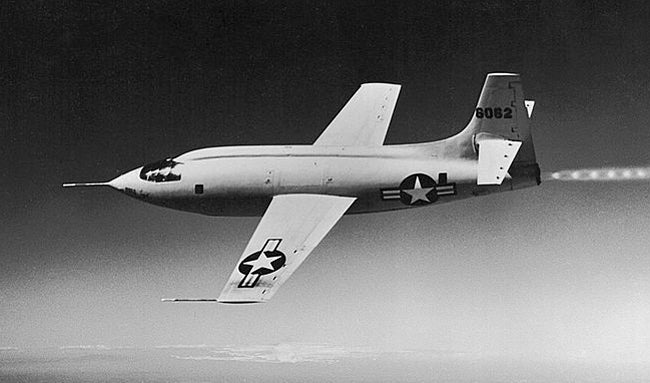
January 19, 1946 – The first flight of the Bell X-1.
Following WWII, the race was on to develop a supersonic airplane. The British were initially at the forefront of the effort, with Miles Aircraft working with the British Ministry of Aviation to develop a turbojet engine that could reach 1,000 mph and soar to 36,000 feet. While rocket-powered models of the aircraft were built, the ministry canceled the project in favor of development of the
!!!error: Indecipherable SUB-paragraph formatting!!!
. But one breakthrough the British made in development of the
!!!error: Indecipherable SUB-paragraph formatting!!!
was the all-moving
!!!error: Indecipherable SUB-paragraph formatting!!!
. Traditional aircraft used moving
!!!error: Indecipherable SUB-paragraph formatting!!!
that were a section of the horizontal stabilizer. But at supersonic speeds, the elevators could not be moved, so Miles employed a system where the entire horizontal tailplane moved, making control at high speeds possible. By 1944, Bell was already working on their own supersonic plane, and the Air Ministry signed an agreement with the US to share data. Bell was allowed to inspect the Miles design, but Bell reneged on the sharing plan, and instead adopted the stabilator to their own aircraft, which had, up to that point, employed a traditional tail. Since so little was known about supersonic aerodynamics, Bell designers looked at bullets that were known to travel supersonically, and the X-1 was designed to mimic the shape of a .50 caliber bullet, a shape that was known to be stable at supersonic speeds. The X-1 would be powered by four-chamber rocket motor designed by
!!!error: Indecipherable SUB-paragraph formatting!!!
that burned ethyl alcohol diluted with water through a liquid oxygen oxidizer. Test flights of the X-1 began in 1946 with a series of glide tests piloted by Bell’s chief test pilot
!!!error: Indecipherable SUB-paragraph formatting!!!
. Woolams completed nine flights before his death while practicing for an air race, and the test flights were taken over by another Bell test pilot,
!!!error: Indecipherable SUB-paragraph formatting!!!
, who made a further 26 flights before interservice squabbling resulted in the project being taken over by the
!!!error: Indecipherable SUB-paragraph formatting!!!
(NACA), the predecessor to NASA, who planned to use the data obtained from the X-1 for future supersonic aircraft development. USAF Captain
!!!error: Indecipherable SUB-paragraph formatting!!!
took over flying duties, and he piloted the X-1 past the sound barrier for the first time on October 14, 1947 (Yeager had broken his ribs in a horse riding accident just before the flight, but he didn’t report the injury, fearing that he would be excluded from the flight. Bell engineers rigged a broom handle so Yeager could close the hatch on the airplane). The aircraft, nicknamed
Glamorous Glennis
in honor of Yeager’s wife, was dropped from a modified Boeing B-29 Superfortress and reached a speed a Mach 1.06 (700 mph), becoming the first pilot and plane to exceed Mach 1 in level flight. For the flight, Yeager, Bell president Lawrence Bell, and
!!!error: Indecipherable SUB-paragraph formatting!!!
of NACA were all awarded the
!!!error: Indecipherable SUB-paragraph formatting!!!
(according to his biography, Yeager would keep the trophy in his garage to store nuts and bolts). Development of the X-1 continued, and Bell produced five variants, each testing different aspects of supersonic flight and materials and systems for the manufacture and control of high-speed aircraft. The final variant, the X-1E, reached a speed of Mach 2.21 in 1958.
(NASA photo)
!!! UNKNOWN CONTENT TYPE !!!
Short Take Off
!!! UNKNOWN CONTENT TYPE !!!
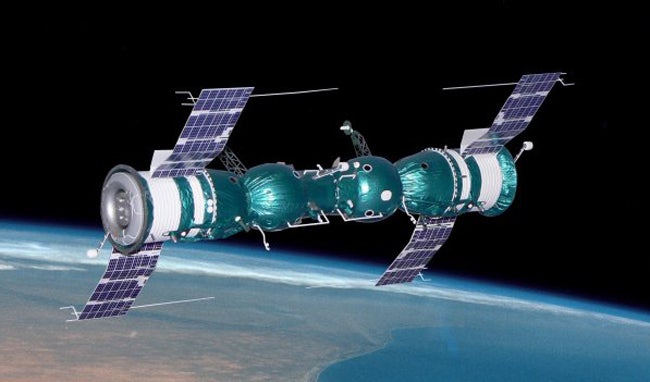
January 16, 1969 – The docking of Soyuz 4 and Soyuz 5, the first time that two spacecraft docked in space and transferred crew from one ship to the other. Soyuz 4, piloted by a single cosmonaut, blasted off from the !!!error: Indecipherable SUB-paragraph formatting!!! on January 14. Soyuz 5 blasted off one day later with a crew of three cosmonauts. All four cosmonauts were flying on their first mission into space. Soyuz 4 and 5 successfully docked on January 16, and on the 65th orbit of the Earth, two cosmonauts from Soyuz 5 performed a space walk to transfer to Soyuz 4, as a docking tube had not yet been developed. Soyuz 4 and 5 would return to Earth on January 17 and 18 respectively. The Americans would perform their own space docking two months later. (Model illustration by Lunokhod 2 via !!!error: Indecipherable SUB-paragraph formatting!!! )
!!! UNKNOWN CONTENT TYPE !!!
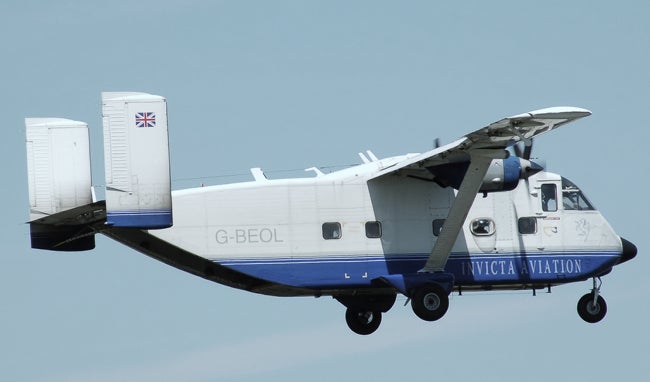
January 17, 1963 – The first flight of the Short SC.7 Skyvan, a 19-seat, twin turboprop utility aircraft developed by Short Brothers of Northern Ireland, and its cavernous fuselage makes it ideal for cargo hauling and skydiving. The SC.7 was inspired by the !!!error: Indecipherable SUB-paragraph formatting!!! , and the idea for developing the Skyvan came about when !!!error: Indecipherable SUB-paragraph formatting!!! approached Shorts with the idea of developing the Aerovan. Shorts went about building their own aircraft instead, though the two designs do share certain similarities. The SC.7 was later developed into the !!!error: Indecipherable SUB-paragraph formatting!!! and !!!error: Indecipherable SUB-paragraph formatting!!! , which were used as commuter airliners. A total of 153 Skyvans were produced between 1963-1986. (Photo by Adrian Pingstone via !!!error: Indecipherable SUB-paragraph formatting!!! )
!!! UNKNOWN CONTENT TYPE !!!
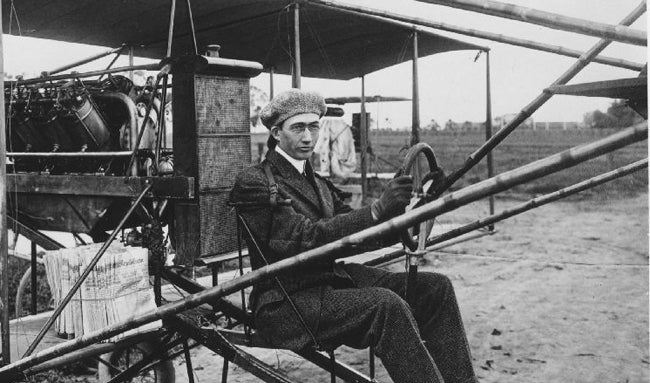
January 17, 1886 – The birth of Glenn L. Martin,
an early American aviation pioneer who founded his own aircraft company in 1912. His first successful aircraft was the
!!!error: Indecipherable SUB-paragraph formatting!!!
, a large biplane bomber that served in WWI. Martin went on to create many successful aircraft during WWII, notably the
!!!error: Indecipherable SUB-paragraph formatting!!!
and the
!!!error: Indecipherable SUB-paragraph formatting!!!
bombers, as well as large flying boats such as the
!!!error: Indecipherable SUB-paragraph formatting!!!
and the
!!!error: Indecipherable SUB-paragraph formatting!!!
. Following the war, Martin found success in the aerospace industry, building the
!!!error: Indecipherable SUB-paragraph formatting!!!
rocket, the first American rocket built specifically for orbital launch. Martin followed the Vanguard with the
!!!error: Indecipherable SUB-paragraph formatting!!!
series of larger rockets. Following his death in 1955, a merger with American-Marietta Corporation formed
!!!error: Indecipherable SUB-paragraph formatting!!!
in 1961, and that company eventually merged with Lockheed to form
!!!error: Indecipherable SUB-paragraph formatting!!!
in 1995.
(Photo via San Deigo Air and Space Musem)
!!! UNKNOWN CONTENT TYPE !!!
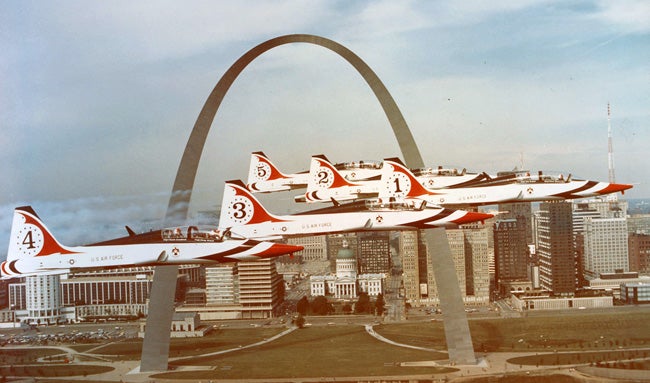
January 18, 1982 – Four USAF Thunderbirds are lost in a crash during practice.
Since the Thunderbirds began performing air shows in 1953, there have been three fatal accidents during an air show. But training accidents have claimed 18 lives, including an entire four-ship flight of
!!!error: Indecipherable SUB-paragraph formatting!!!
that crashed into the ground at the Thunderbirds’ Indian Springs, Nevada training area. The team was practicing a line-abreast loop when the lead pilot, Maj. Tom Lowry, experienced a jammed stabilizer that caused him to fly into the ground. The other pilots, following standard procedure, were fixed on the leader, and not looking forward. The four planes hit simultaneously, instantly killing all four pilots. After an 18-month hiatus from performing, the Thunderbirds transitioned back to frontline fighters, opting for the
!!!error: Indecipherable SUB-paragraph formatting!!!
.
(US Air Force photo)
!!! UNKNOWN CONTENT TYPE !!!
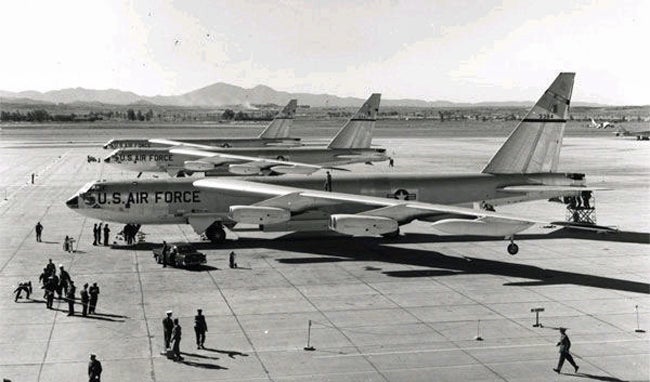
January 18, 1957 – Three USAF Boeing B-52 Stratofortresses complete the world’s first non-stop circumnavigation of the earth in a jet-powered aircraft.
In a mission dubbed Operation Power Flight, three USAF B-52s from the 93rd Bombardment Wing departed from Castle AFB in California on a flight that was as much about propaganda as it was about testing operational capabilities. With aerial refuelings provided by
!!!error: Indecipherable SUB-paragraph formatting!!!
tankers, the flight covered 24,235 miles and was completed in 45 hours and 19 minutes. The commander of the lead aircraft, Lt. Col. James Morris, had previously been copilot of
!!!error: Indecipherable SUB-paragraph formatting!!!
, a
!!!error: Indecipherable SUB-paragraph formatting!!!
that circumnavigated the globe in 1949. Strategic Air Command General Curtis LeMay presented the B-52 crews with the Distinguished Flying Cross upon their return.
(US Air Force photo)
!!! UNKNOWN CONTENT TYPE !!!
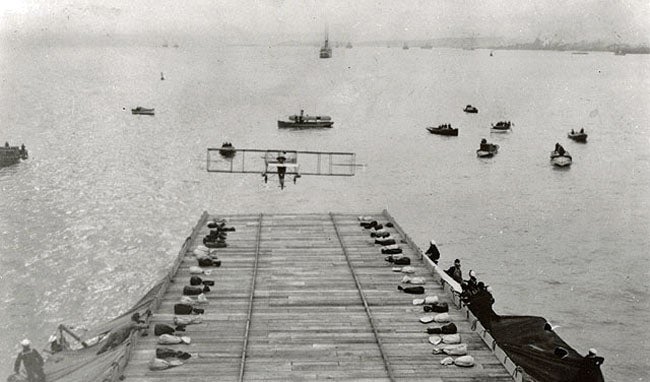
January 18, 1911 – Eugene Ely makes the first landing on a ship.
After succesfuly taking off from the USS
Birmingham
(CL-2) in Hampton Roads two months earlier, Ely, with the help of Glenn Curtis and at the urging of the US Navy, made the first landing on a ship, touching down his
!!!error: Indecipherable SUB-paragraph formatting!!!
on the USS
Pennsylvania
(ACR-4) moored in San Francisco Bay. A 120-foot temporary deck was built on the ship, outfitted with ropes tied to sandbags to provide a crude arresting system. While thousands of spectators watched, Ely performed a flawless landing and, after lunch with the captain of the
Pennsylvania
, the ship was turned into the wind and Ely took off for the return flight to the Tanforan Race Track where he had taken off earlier in the day.
(Photo via the
!!!error: Indecipherable SUB-paragraph formatting!!!
)
!!! UNKNOWN CONTENT TYPE !!!
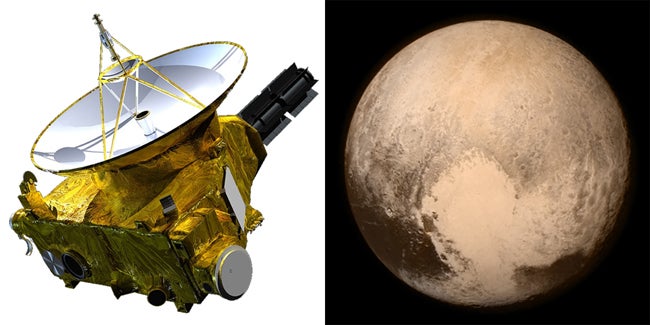
January 19, 2006 – The launch of the New Horizons interplanetary space probe. The New Horizons probe was launched by NASA to perform the first flyby of the dwarf planet of Pluto, and to return close-up pictures to Earth for the first time. Part of the NASA’s !!!error: Indecipherable SUB-paragraph formatting!!! program, which also includes study of Jupiter and Venus, the New Horizons probe began returning photos on July 14, 2015 after a journey of more than nine years. After its flypast of Pluto, New Horizons has maneuvered for a flyby of object !!!error: Indecipherable SUB-paragraph formatting!!! in the !!!error: Indecipherable SUB-paragraph formatting!!! . NASA expects the probe to arrive on January 1, 2019. (NASA photos)
!!! UNKNOWN CONTENT TYPE !!!
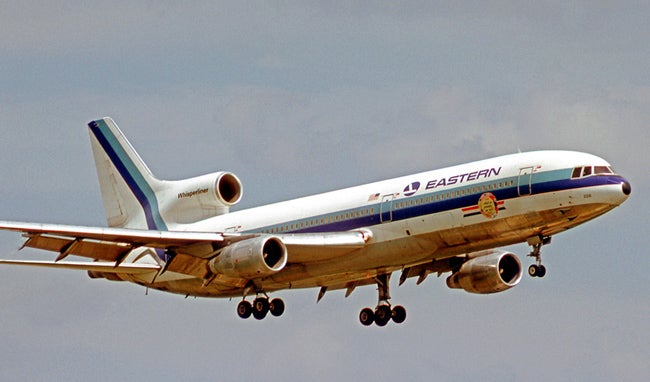
January 19, 1991 – Eastern Air Lines is dissolved.
Following the
!!!error: Indecipherable SUB-paragraph formatting!!!
of 1930, Eastern was one of the “Big Four” airlines (Eastern, American, TWA, United) created by the US government to handle passenger travel apart from delivery of air mail. Led at first by WWI fighter ace
!!!error: Indecipherable SUB-paragraph formatting!!!
, Eastern enjoyed a near monopoly of the air routes on the east cost, particularly between New York and Florida into the 1950s. But by the late 1970s, Eastern struggled with labor disputes and high debt under the leadership of former astronaut
!!!error: Indecipherable SUB-paragraph formatting!!!
, and the company was eventually taken over by
!!!error: Indecipherable SUB-paragraph formatting!!!
in 1985, who moved many of the company’s assets to his other airlines, Continental and Texas Air. Following more labor disputes and a strike in 1989, Lorenzo liquidated the storied airline in 1991 after 64 years of continuous operation.
(Photo by Ruth AS via
!!!error: Indecipherable SUB-paragraph formatting!!!
)
!!! UNKNOWN CONTENT TYPE !!!
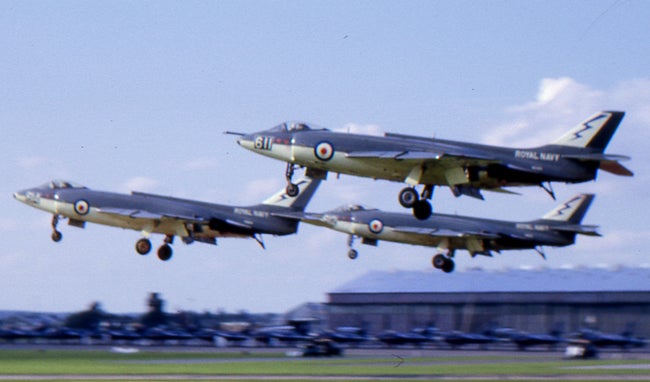
January 19, 1956 – The first flight of the Supermarine Scimitar. The Scimitar began as part of a study to develop a fighter with no undercarriage that would land on a sprung rubber deck. After the Royal Navy abandoned that idea, Supermarine developed the aircraft into a more traditional fighter called the Type 508. That aircraft was subsequently developed into the Scimitar, with the Royal Navy ordering 100 aircraft but changing its role from that of fighter to a low level strike aircraft capable of delivering nuclear weapons. Ultimately, only 76 Scimitars were produced, and a high accident rate, including the death of Commander John Russell due to an arrester wire failure that was !!!error: Indecipherable SUB-paragraph formatting!!! by Pathé News, led to its replacement by the !!!error: Indecipherable SUB-paragraph formatting!!! and !!!error: Indecipherable SUB-paragraph formatting!!! . (Photo by TSRL via !!!error: Indecipherable SUB-paragraph formatting!!! )
!!! UNKNOWN CONTENT TYPE !!!
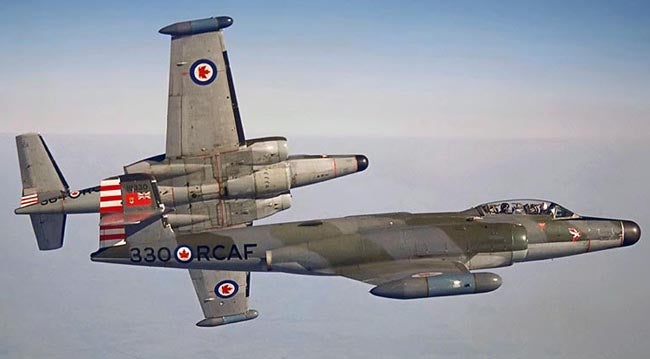
January 19, 1950 – The first flight of the Avro Canada CF-100 Canuck. The Canuck, known affectionately to its pilots as “Clunk,” was the only domestically-produced Canadian fighter to enter mass production. Its all-weather capability, powerful engines and radar, short takeoff roll and high rate of climb made the Canuck an ideal interceptor, a role which it filled for the RCAF throughout the Cold War. It was called on to patrol the vast reaches of North America as part of NORAD to intercept Russian bombers on reconaissance missions, and was so ruggedly built that initial estimates of a 2,000 hour lifespan actually turned out to be 20,000 hours in frontline use. After its introduction in 1952, nearly 700 Canucks were produced before it was replaced by the the !!!error: Indecipherable SUB-paragraph formatting!!! . The Canuck was finally retired in 1982. (Canadian Department of National Defence photo)
!!! UNKNOWN CONTENT TYPE !!!
!!! UNKNOWN HEADER TYPE (MULTI-LINE BREAK?) !!!
!!! UNKNOWN CONTENT TYPE !!!
!!! UNKNOWN CONTENT TYPE !!!
!!! UNKNOWN CONTENT TYPE !!!
!!! UNKNOWN CONTENT TYPE !!!
If you enjoy these Aviation History posts, please let me know in the comments. And if you missed any of the past articles, you can find them all at
!!!error: Indecipherable SUB-paragraph formatting!!!
.
!!! UNKNOWN CONTENT TYPE !!!
 Jcarr
> ttyymmnn
Jcarr
> ttyymmnn
01/19/2016 at 12:41 |
|
Back, but not quite the same...
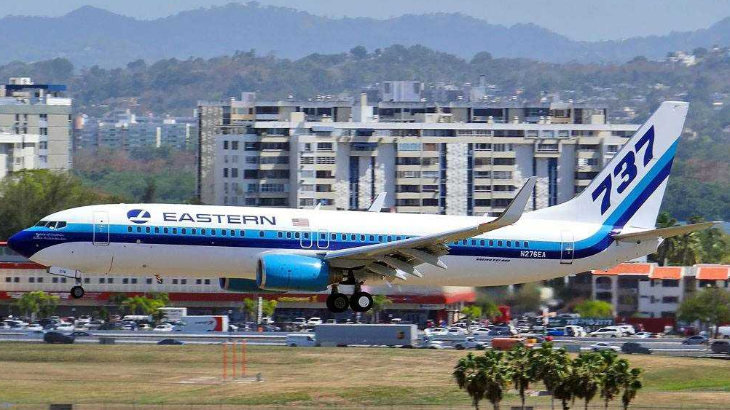
 McMike
> ttyymmnn
McMike
> ttyymmnn
01/19/2016 at 13:04 |
|
During that mission, one of the Ravens scored a kill against an Iraqi Dassault Mirage F-1 when its low level maneuvering to avoid the Raven caused the pilot to crash. This marks the only time an F-111 achieved an aerial victory over an opponent.
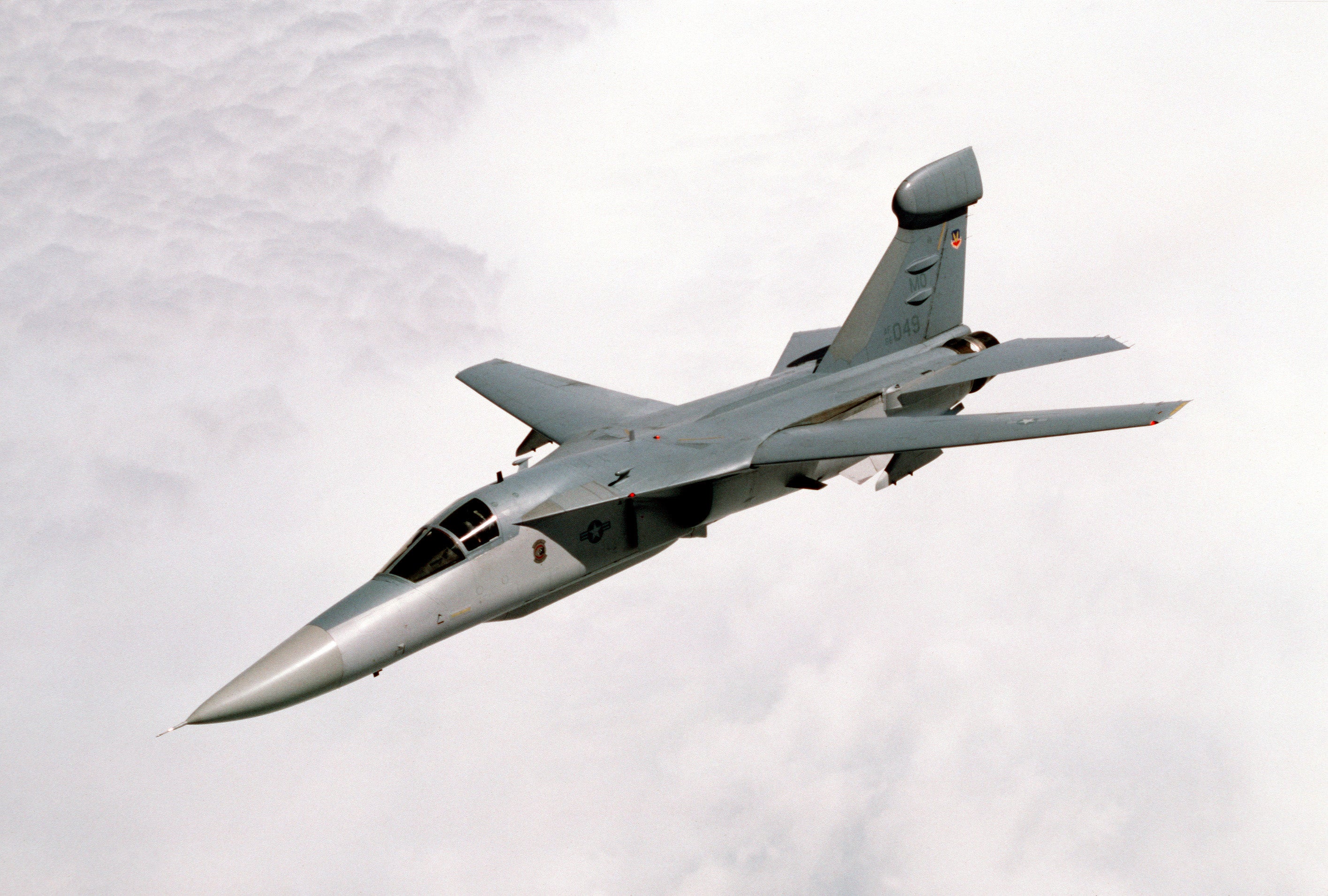
“
Do you know who I am?
Have you any idea how many anonymous aircraft I have identified over the years?
And look at you, you don’t even have terrain-following radar - you’ve got no chance.
Why don’t you just fly into the ground.... Go on son.”
 Chris Clarke
> ttyymmnn
Chris Clarke
> ttyymmnn
01/19/2016 at 13:05 |
|
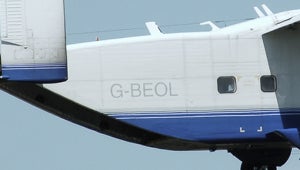
I jumped out the back of one of these.
 ttyymmnn
> Chris Clarke
ttyymmnn
> Chris Clarke
01/19/2016 at 13:09 |
|
You’re a better man than I am, Gunga Din. Something something perfectly good airplane something something....
 user314
> ttyymmnn
user314
> ttyymmnn
01/19/2016 at 14:26 |
|
And, for the first time, the Lockheed F-117 Nighthawk flew into battle. The stealthy Nighthawk had been a closely held secret, and this was the first time it would be used against an enemy.
I’m going to quibble here. The “Wobblin’ Goblins’” were made public in 1988, and made their first combat deployment the year after, bombing the PDF’s Rio Hato base.
 ttyymmnn
> user314
ttyymmnn
> user314
01/19/2016 at 15:15 |
|
Please quibble. I’ll check it out. I thought it seemed a little late for its debut.
 ttyymmnn
> user314
ttyymmnn
> user314
01/19/2016 at 17:18 |
|
Edited. Thanks for pointing that out.